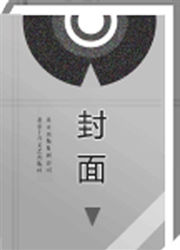

 中文摘要:
中文摘要:
反刍动物瘤胃内由古菌驱动的甲烷生成不仅消耗了6%~10%的日粮能量摄入,而且生成甲烷气体是重要的温室效应气体。在全球气候变化的背景下,瘤胃古菌甲烷代谢调控成为关系畜牧业可持续性发展的重要课题。全面认识瘤胃中古菌多样性是寻找广谱、长效的瘤胃产甲烷调控方法的基础。通过对公共数据库中收录的3 112条瘤胃古菌16S rRNA基因序列进行分类和多样性预测分析,发现现有的古菌特异性引物与一些古菌种属的16S rRNA基因序列之间存在许多错配。瘤胃古菌群落在种属水平上的多样性较低,甲烷短杆菌(Methanobrevibacter)占到总数的70.1%,嗜酸球菌(Picrophilus)和甲烷球形菌(Methanosphaera)分别占13.5%和5.8%。瘤胃产甲烷古菌群落的组成也因受到宿主类型、日粮和环境等多重因素的影响而表现出较大的差异。这些结果拟为寻找一种高效、广谱的瘤胃古菌产甲烷活性的调控方法提供依据。
 英文摘要:
英文摘要:
Archaea-driven methanogenesis within the rumen not only consumes 6%-10% of the energy intake,but also releases substantial methane as an important greenhouse gas,which makes it a critical issue for the sustainable development of livestock industries under global climate changes.Seeking of an effective and stable methanogenesis inhibition strategy makes it necessary to further understand the archaeal diversity in the rumen.Here we summaries the current status archaea census in the rumen.It is found that some mismatch exists between the archaea specific primers and 16S rRNA gene sequences originated from some taxa of archaea.The phylogenetic and rarefaction analysis to the 3112 ruminal archaeal 16S rRNA gene sequences indicates that rumen archaeal community is characterized of low diversity on genus level,while the dominant Methanobrevibacter account for 70.1% of the total,implying that methane production might be inhibited by a specific target only a narrowing range of taxa.However,the structure of rumen archaea community differs between host genotype,diet and environmental conditions,which provides challenges for seeking an effective and stable rumen methanogenesis inhibition strategy.
 同期刊论文项目
同期刊论文项目
 同项目期刊论文
同项目期刊论文
 期刊信息
期刊信息
